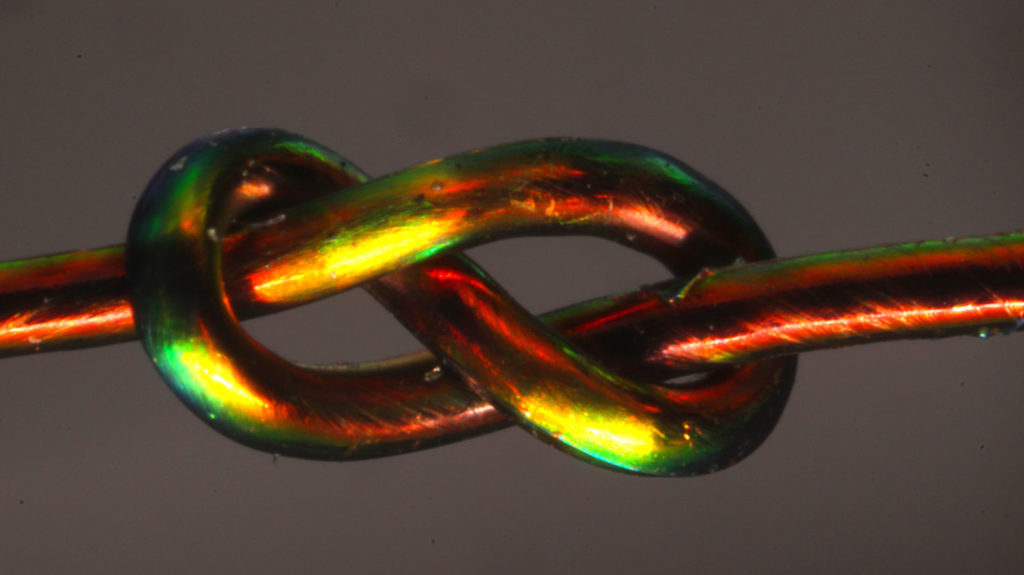Heard on All Things Considered.
Special fibers that change color when they are under strain have helped scientists come up with some simple rules that can predict how a knot will perform in the real world.
There’s a whole field of mathematics that studies knots, to explore abstract properties of idealized curves. “But that’s not what you care about if you are, for example, a sailor or a climber and you need to tie something which holds,” says Vishal Patil, a graduate student at the Massachusetts Institute of Technology whose new findings appear in the journal Science.
People have used knots since ancient times, notes Patil, and thousands of knots have been invented. Yet scientists struggle to explain why knots do what they do. Most of what’s known about them comes from long experience, rather than any theoretical understanding.
For example, take the granny knot and the reef knot — two simple knots that look very similar but behave very differently.
“It’s quite easy to see this, if you just take a shoelace or a bit of string and you tie it. If you pull on the reef knot, it tends to hold. And if you pull on the granny knot, it tends to slip quite easily,” says Patil. “The fact that they behave so differently suggests that there must be some story there, something you can say mathematically and physically about them.”
READ MORE at npr.org

